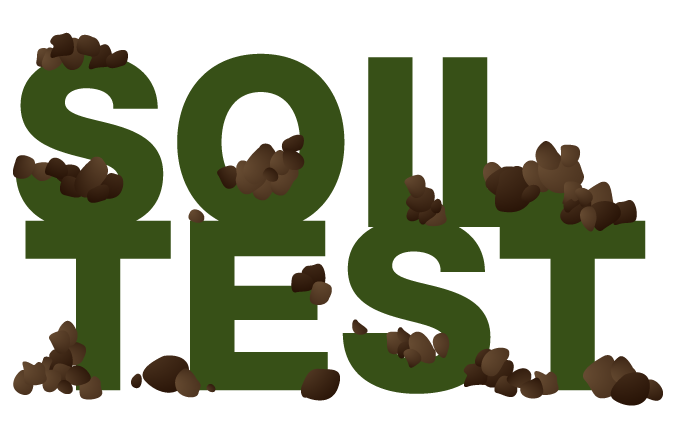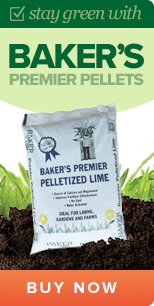Liming FAQ: Answers to Your Frequently Asked Liming Questions
Table of Contents

Author/Reviewed By: Josh Miller, Sales Manager: Baker Lime & North America Minerals
Published: 12/4/2014 – Updated: 12/19/2019
Most homeowners strive to maintain a lush, precisely mowed lawn. This takes work and knowledge about how to provide proper care of your turf, including tasks like watering, mowing at the correct height for your type of turf and fertilizing as needed. In some cases, this also includes adding lime to your lawn to release nutrients and promote healthy growth.
Gardeners, landscapers and farmers have used lime for many years to help condition their soil and promote healthy plant growth. When using lime for your lawn, you’ll need to understand the different types of lime available and how to properly apply lime to prevent it from burning your lawn while obtaining the maximum results.
Liming is often necessary if you want a healthy, attractive lawn. Let’s look at some common questions and answers about lime.
Request A Quote On Our Lime!
What Is Lime?
The lime used for lawns starts out as limestone dug from quarries or pits. This naturally-occurring type of rock contains important minerals and high levels of calcium and magnesium carbonate.
Once lime is prepared for agricultural purposes it works as a conditioning agent for soil and offers many benefits:
- Neutralizes pH levels
- Increases the availability of nutrients in the soil for plants
- Reduces soil toxicity levels
- Promotes soil microbe activity
- Improves soil structure
Liming soil is one of the oldest methods of improving soil for crops and lawns. It is an effective method of correcting acidic lawn conditions.
Why Is Soil pH Important When Adding Lime To Lawn?
Soil pH determines how soil ranges from acid to neutral to alkaline. This characteristic is given a pH number. Soil with a pH of seven is neutral. Levels below seven are considered acidic and those above seven are considered alkaline. If a soil’s pH level is extreme in either direction, plants in that soil are not getting the nutrients they need to grow properly.
Soil pH levels are important because they can affect how well your lawn grows. A soil’s pH level affects plant growth in several ways:
- Nutrient availability
- Soil bacteria
- Nutrient leaching
- Soil structure
- Soil toxicity

Acidic soils are most common in areas with heavy rainfall or regions that have sandy soil. Alkaline soils are often found in regions where there is little rainfall. Highly acidic soils are inhospitable to plants.
Adding lime is a common method for raising pH and neutralizing acidic soil. Alkaline soils often require sulfur to lower the pH and get it back to a neutral level.
You can determine the health of your soil by taking a soil test to reveal the nutrient deficiencies determined by the pH levels. This will give you an overall idea of your soil’s condition.
How Do I Know If Lime Is a Good Option for My Lawn?
Caring for a lawn can be a tedious task. You’ll know that something isn’t quite right if your lawn still doesn’t look healthy, even if you take good care of it by:
- Watering regularly
- Mowing regularly and at the appropriate height for your turf
- Mulching and recycling clippings back onto the lawn
- Fertilizing as needed to promote healthy growth
A lawn that needs lime often takes on a sickly appearance. You might notice dead spots or yellowing of your grass, known as chlorosis. Chlorosis is often due to iron deficiency.

Other indicators of a lawn in need of lime are weeds and other coarse grasses taking over the lawn. A soil test is the best way to determine if your lawn soil is acidic and in need of liming. You’ll also need to rule out other common lawn problems such as insects and disease.
How Does Lime Work for Fertilizer?
Lime is a plant food. It is often overlooked as a fertilizer, but it does help plants get the nutrients from the soil needed for proper growth. Grass roots cannot take in the nutrients they need to grow properly if the soil is too acidic. This is where lime comes in — it helps neutralize the soil.
A soil with a pH at or below 5.5 can suffer from nutrient deficiencies in calcium, magnesium and phosphorous. All three play an important role in plant health.
Calcium is needed for cell formation and growth in plants. Most roots need some calcium at the growing tips.
Magnesium plays an important role in plant growth. It forms the core of chlorophyll molecules in green leaves.
Phosphorous is necessary for strong root growth and for the transfer of energy throughout the plant.
Acidic soils can cause toxic conditions for your lawn by increasing the availability of manganese and aluminum. Lime helps free nutrients in the soil so plants can take them up for proper growth and reduces acidity to prevent toxic conditions.

In What Other Ways Does Lime Help the Lawn?
Lime acts as a tonic for sick soil filled with disease and insects. Diseases such as club root and clover sickness can stem from soil that lacks certain nutrients. Since adding lime helps make the necessary nutrients available, the process can help heal sick soil.
Many insects find lime very distasteful, which means common insects, like slugs, wireworms and other lawn pests won’t stick around in soil treated with it. Lime can also be harmful to some types of insect pests.
What Is Sour Soil?
Sour soil is a term used to describe a condition that develops in a poorly-draining soil. It is often used synonymously with acidic soil. You can “sweeten” sour soil by adding ag-lime ground limestone. The most commonly used forms are:
- Ground limestone
- Dolomitic limestone
- Hydrated lime
Lime works to break up clay soil by reducing the cohesiveness of particles and promoting better drainage.
What Kind of Lime Should I Use?
Agricultural ground limestone comes in pellets that can be spread without creating a large amount of dust. This type is most often used for turf grass application. Lime comes in many different types:
Ag-lime: This type of lime is suitable for an average garden and lawn. It is a coarse type of limestone, so it spreads better from agricultural spreaders. The disadvantage to ag-lime is the time it takes to break down — it can take years.
Powdered or Pelletized Lime: This type of lime is finely crushed and it breaks down and acts quickly. The downside to this type of lime is that it creates a lot of dust when applying and it can be difficult to transport.
Hydrated Lime: Hydrate lime is made from Calcium Hydroxide and should not be spread on the lawn or garden. You should abstain from using hydrated lime in the garden. This type of lime can burn plants and your skin.
Liquid Lime: This type of lime is most suitable for industrial applications rather than agricultural. It easily spreads across a large area, but it does not give the soil a sufficient amount of lime for effective conditioning.
Are There Differences in Lime Quality?
Particular size can affect lime quality. Ag-lime is usually powdered or in pellets to help it dissolve more quickly. This type of lime is usually a mixture of calcium and magnesium carbonate, which are very effective in neutralized soil pH levels.
What Is the Best Season to Apply Lime On a Lawn?
You can apply lime to your lawn at any time, but fall in the most beneficial time: This allows the lime to take advantage of the normal freeze and thaw cycles. These cycles help the lime break down over the winter months, getting the soil in better condition for spring plant growth. You can also apply lime in early spring.
Don’t apply lime when your lawn is frost-covered or wilted. And always water the lawn after applying the lime to wash the lime off the grass blades and allow it to make contact with the soil.
How Do I Apply Lime to My Lawn?
Lime works best when it is evenly distributed on the lawn. Careless applications lead to poor results:
- Overlapping lime applications raises pH levels too much in those areas with higher concentrations.
- Missing areas lead to patches of lawn that are too acidic because lime did not reach those areas and did not neutralize the pH levels.
To ensure the lime is evenly distributed on the lawn, use spinner spreader or drop spreader.
Applying lime to your turf requires a surface application, which means you should apply less than what is used when tilling it into the soil. For lawns, a soil test will tell you how many pounds of lime to apply for every one thousand square feet. As a rule of thumb, most lawns can be treated with two pounds of lime per 100 square feet. You can also look for the recommended use on the bag of lime. Learn more about liming your lawn here.
How Quickly Will I See Results?
The type of lime you’ve used determines how quickly you see results from applying lime. The thickness of lime can also be a factor — a finer material covers more area and will work faster than coarser material.
Lime also needs water to create a reaction in the soil, so if soil is dry it takes longer to see any improvement in your lawn. Even under perfect moisture conditions, it can take up to one year before you see results. If your soil pH is extremely low, you may start to see results in a few weeks.
How Often Should I Apply Lime On A Lawn?
You can apply lime to your lawn annually. Keep in mind that you should only do so if a soil test determines that your lawn soil is acidic: Liming when not necessary can lead to alkaline soil.
Alkaline soil is also problematic for turf. Chlorosis is often a problem in alkaline soils with a high pH level. This is due to the reduced availability of several necessary nutrients in the soil:
- Iron
- Zinc
- Copper
- Manganese
When soil pH reaches 8.5 or higher, the soil becomes sodic, meaning it is high in sodium. Sodic soils are almost resistant to water and become poorly drained. You want to keep your lawn at a neutral pH level for optimum health. A pH level of seven is neutral.
What Is “Overliming” Injury?
Calcium is needed in the soil for good root development, but the soil can have too much. When too much lime is applied, the soil has too much calcium and becomes alkaline. Some elements in the soil needed for proper plant growth are not soluble in alkaline soil:
- Zinc
- Manganese
- Boron
These elements are needed in small amounts for plants to grow properly. When these elements are not available, plants suffer and often become chlorotic, gaining a yellow color in the process.
You can correct overliming by applying sulfur. More than one application may be necessary to get your soil back to the desired pH level.
Can Lime Harm My Plants?
Lime can harm some plants, but it is great for others. Lime-loving plants include:
- Some plants in the rose family
- Many types of conifers, like junipers
Some plants are harmed by lime:
- Plants in the heath family
- Rhododendrons
- Azaleas
Lime should not be applied near these plants. But for the majority of plants, including vegetables and flowers, neutral to slightly acidic soil is best, so liming periodically will not harm the plant and instead helps maintain plant health.

Many people forget that most plants need a supply of lime to in order to grow: Adding lime to soil makes nutrients readily available for plants to take up through their roots and into the plant.
You can burn plants by adding too much lime at one time or by adding lime near plants damaged by frost or dried out from lack of rainfall. You can avoid burning plants by watering plants after applying and washing the lime off plant foliage.
You should never apply more than 50 pounds of lime per every one thousand square feet during an application. This is too much lime for plants to handle at any one time.
Where Can I Buy Lime?
Ag-lime is the best choice for your lawn needs, and Baker Lime products you can use to promote the essential nutrients your lawn needs to grow properly and stay healthy, green and lush.
Have questions? Our staff can assist you with questions about the various lime products and their uses. This means you can get help to ensure you get the product that matches your needs. Baker Lime offers other benefits as well:
- Ships lime 24 hours a day, 365 days a year
- Offers customers a resource center to learn more about the company and products
- Serve customers in Delaware, Maryland, New Jersey, New York, Pennsylvania, Virginia, West Virginia and beyond
When buying lime, you can choose to buy it by the bag or in bulk. If you have a large area to cover, you may find it more cost-effective to buy in bulk than in 50-pound bags. Find and contact your local Baker Lime dealer for a quote on bulk lime.








